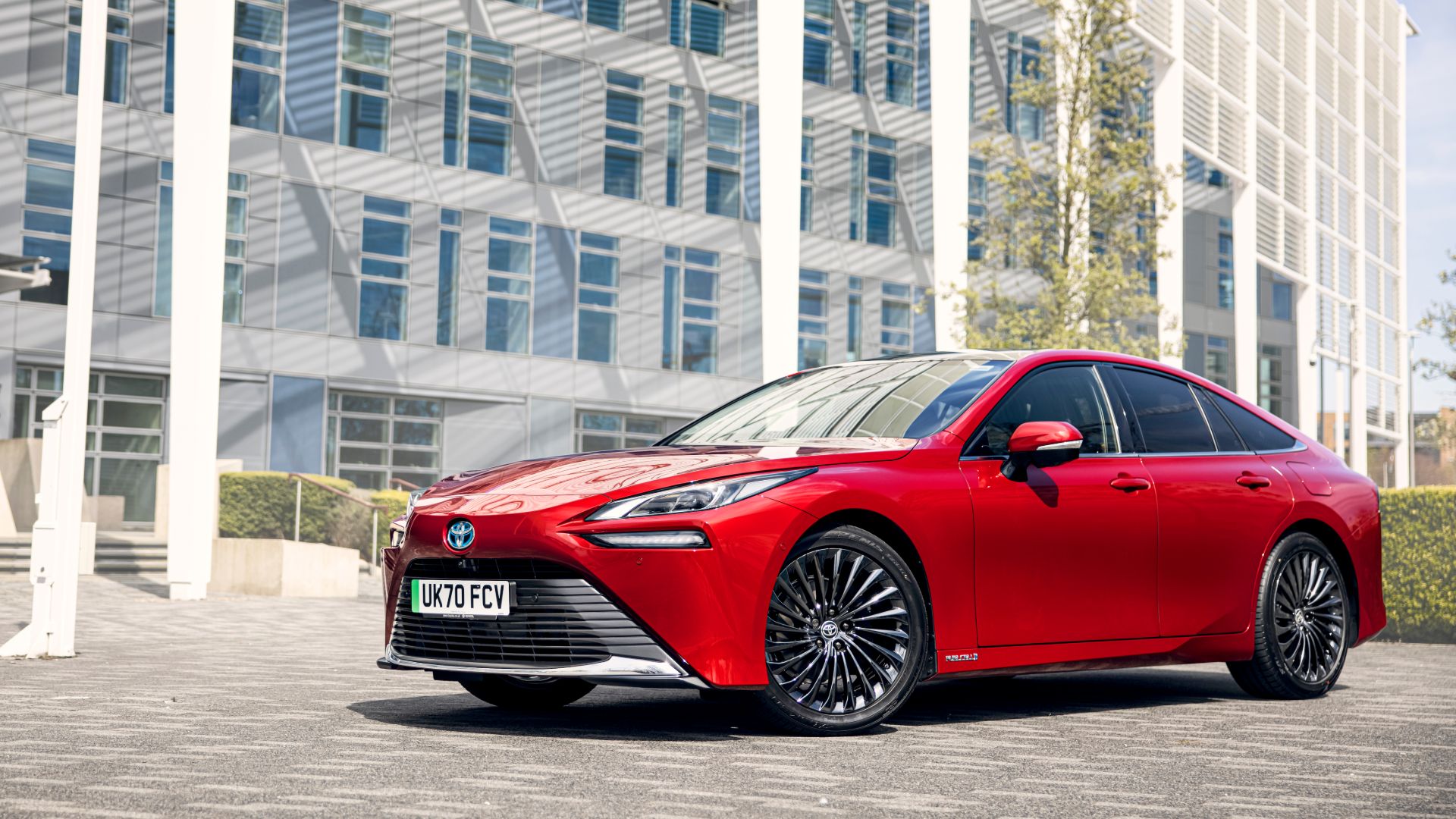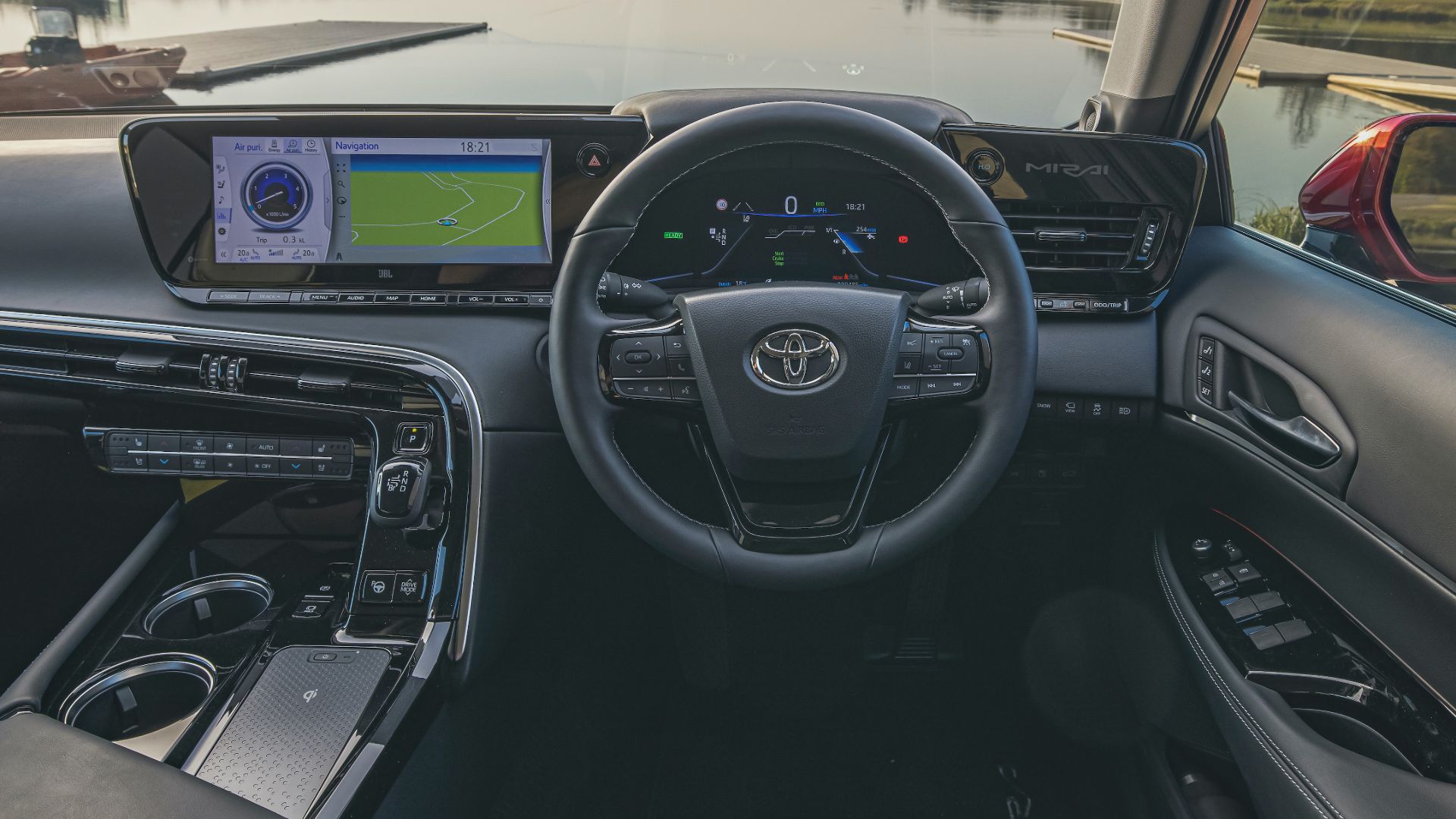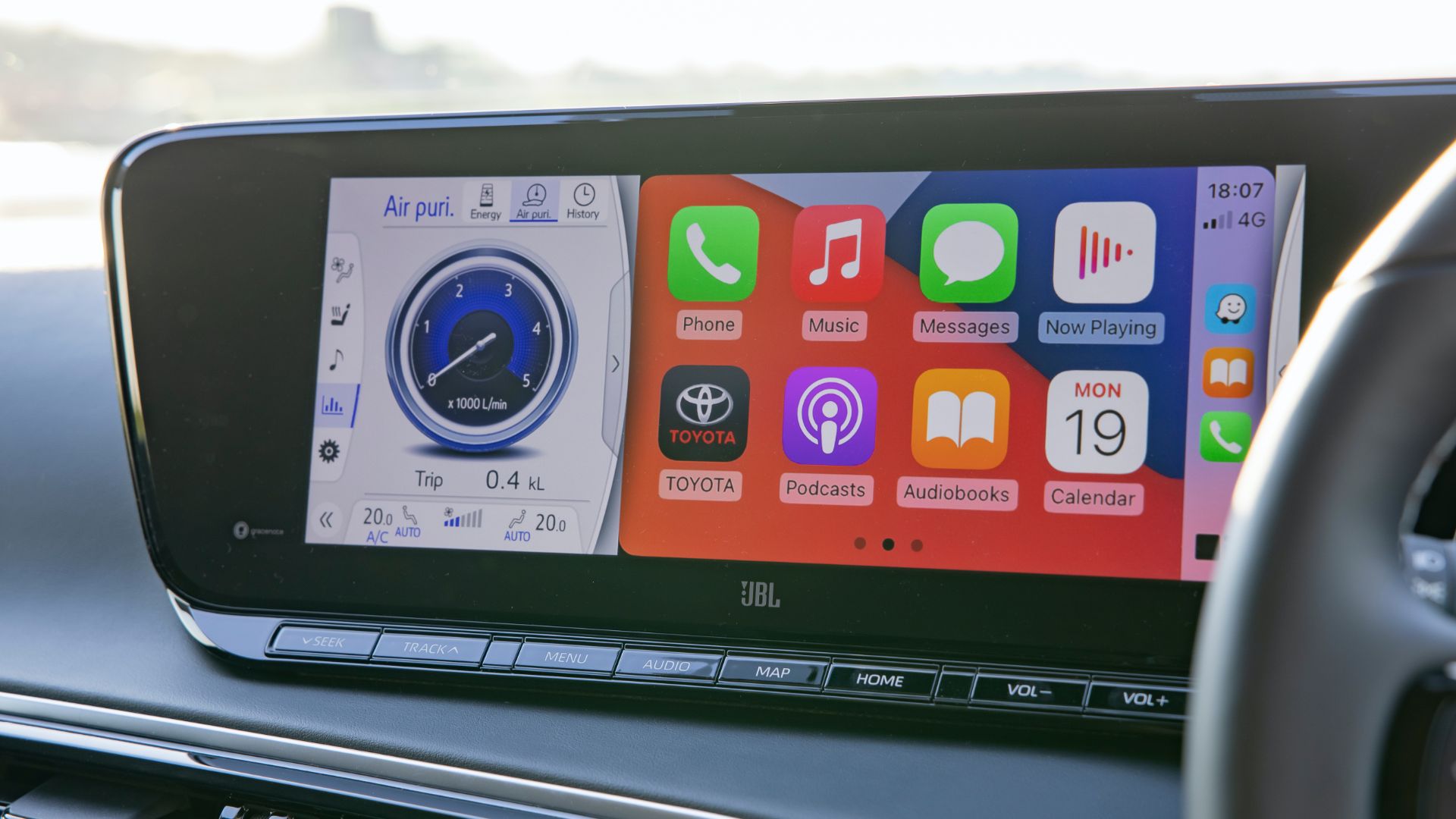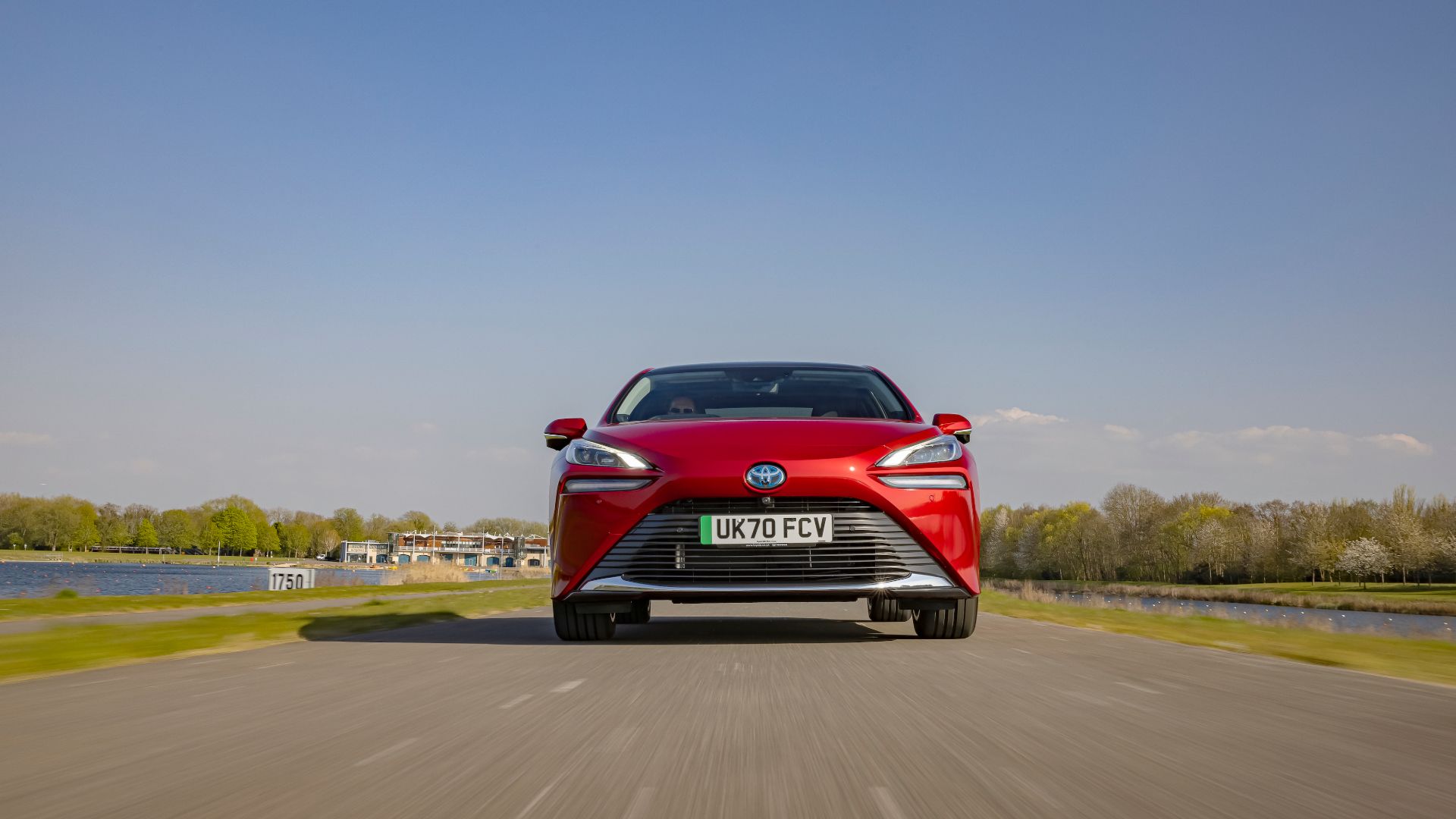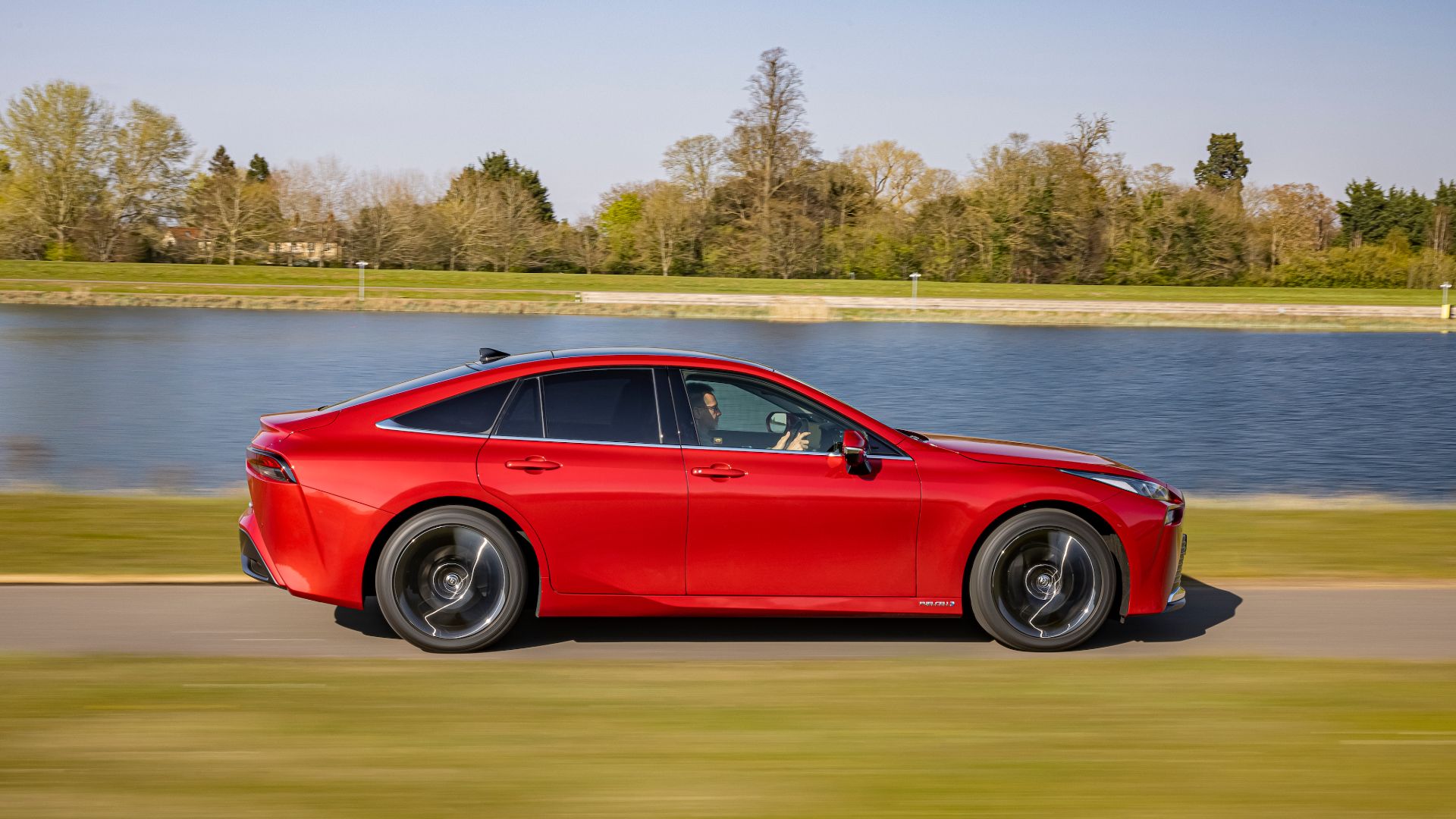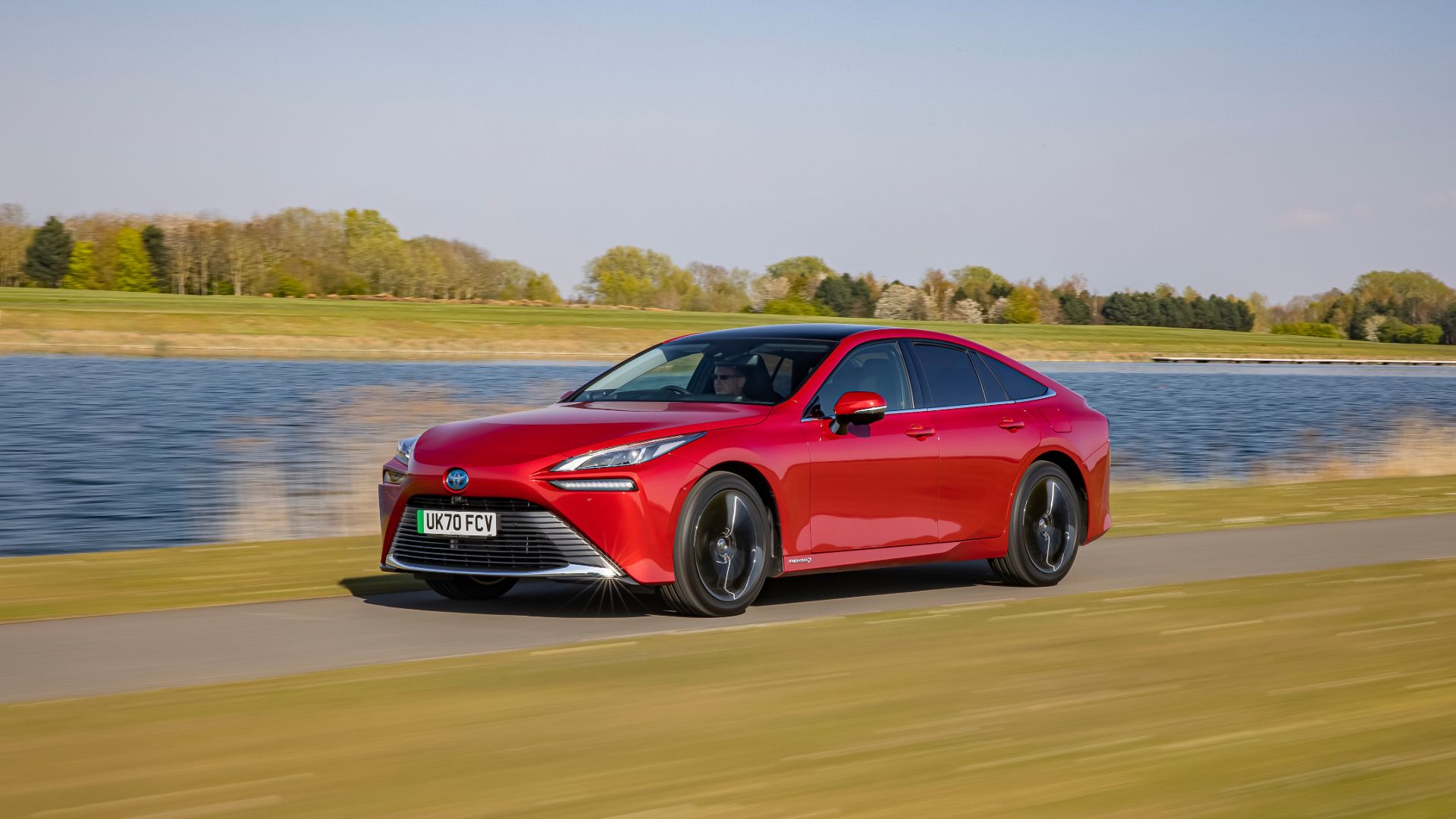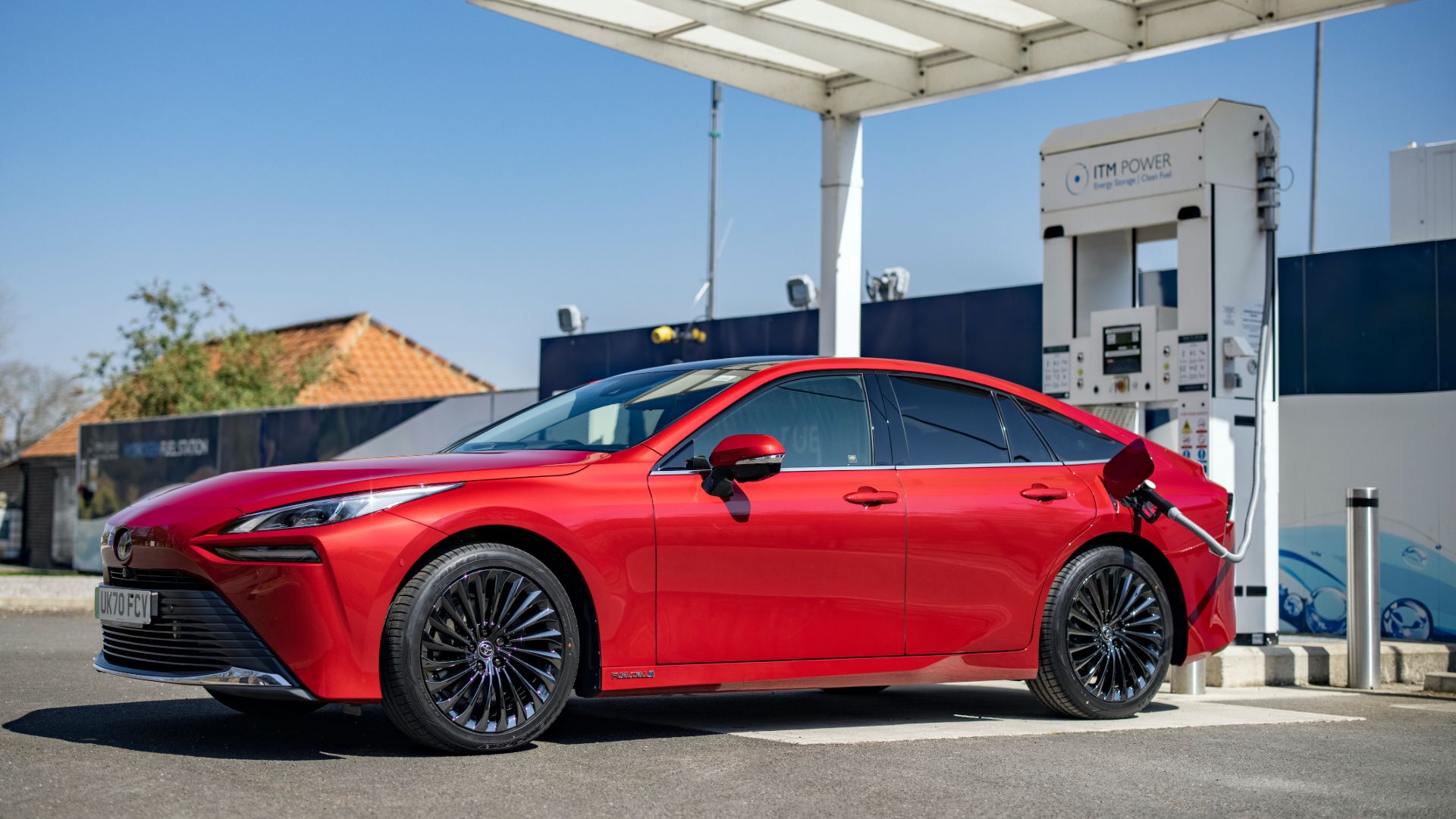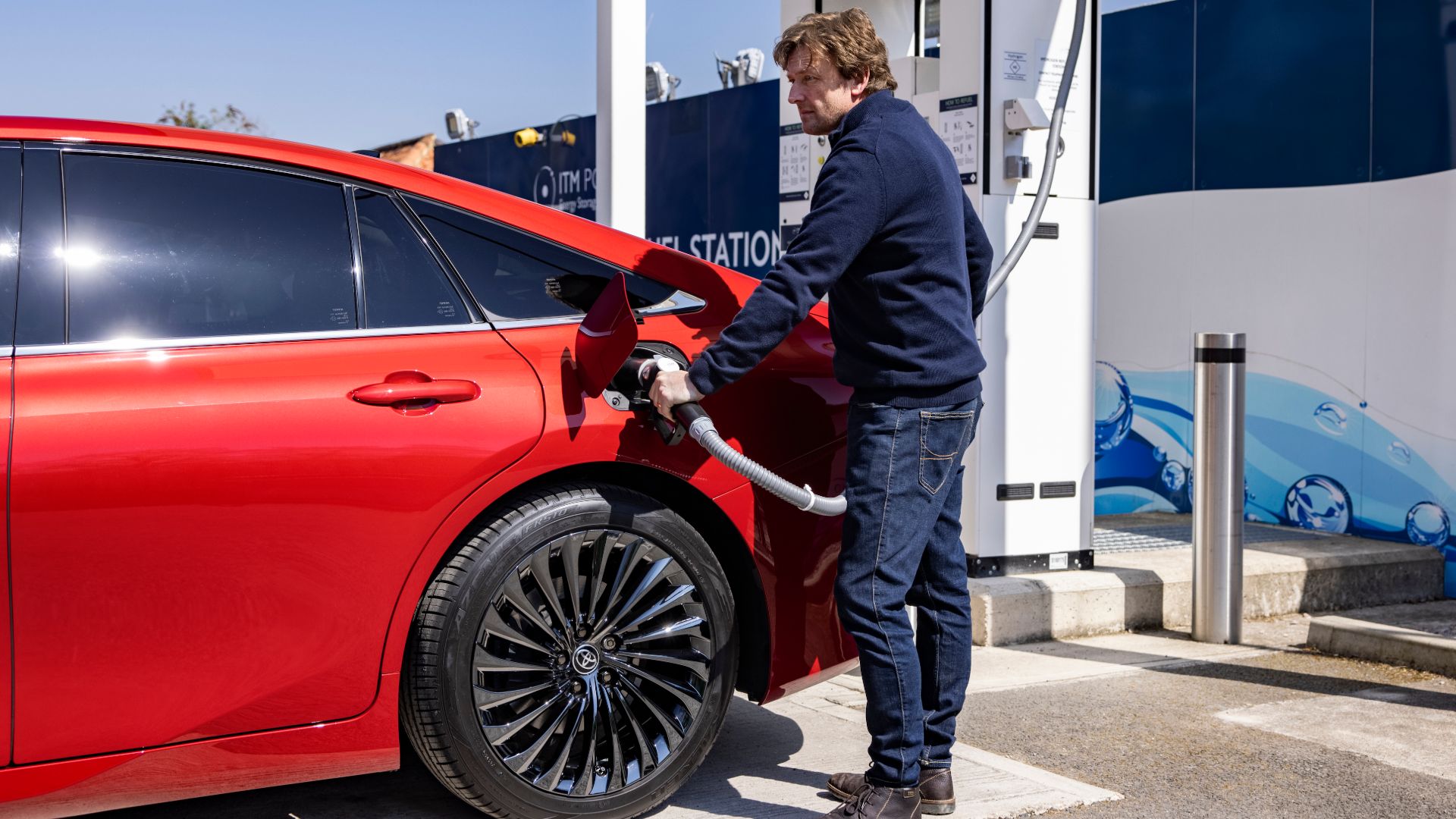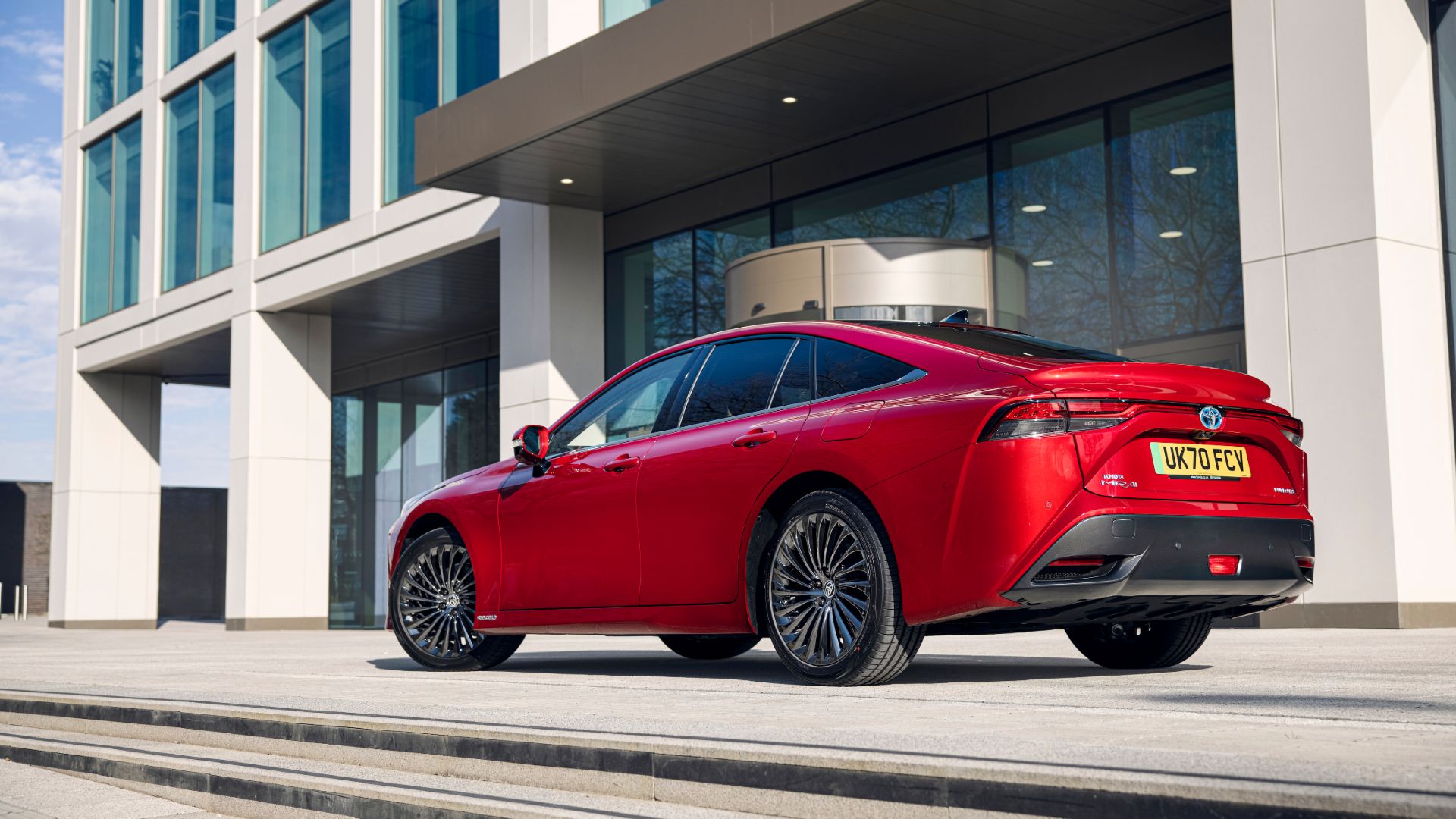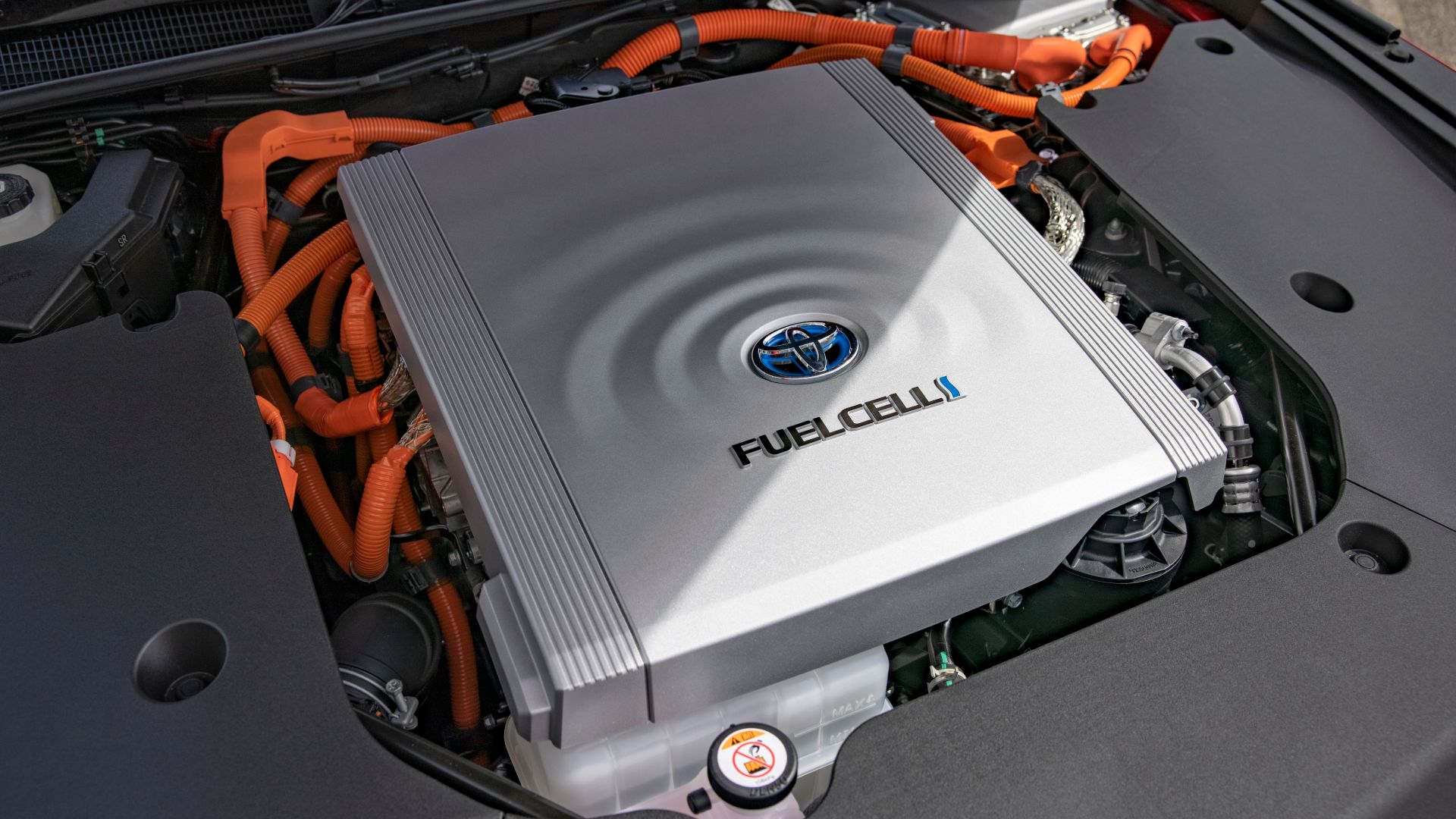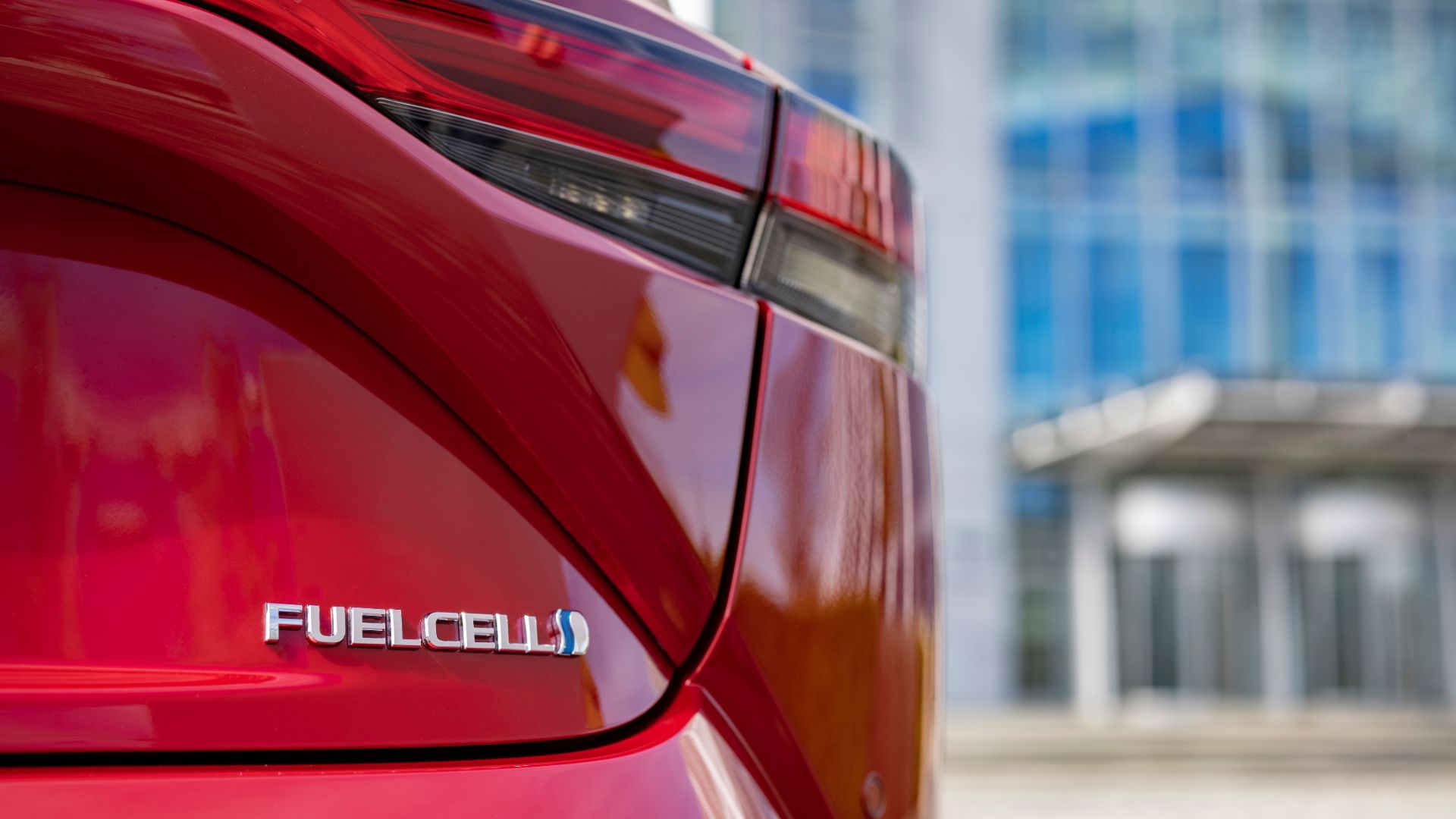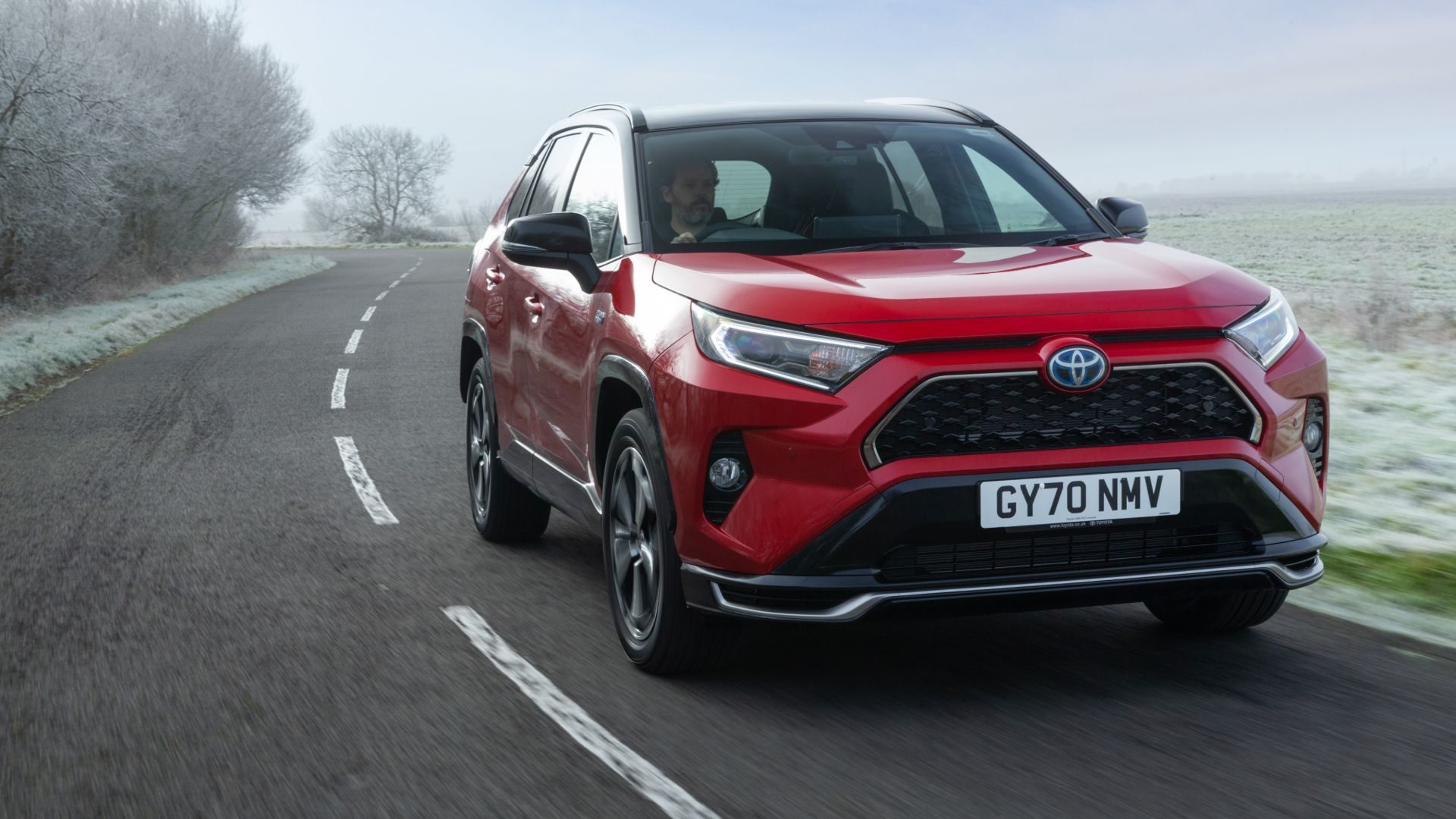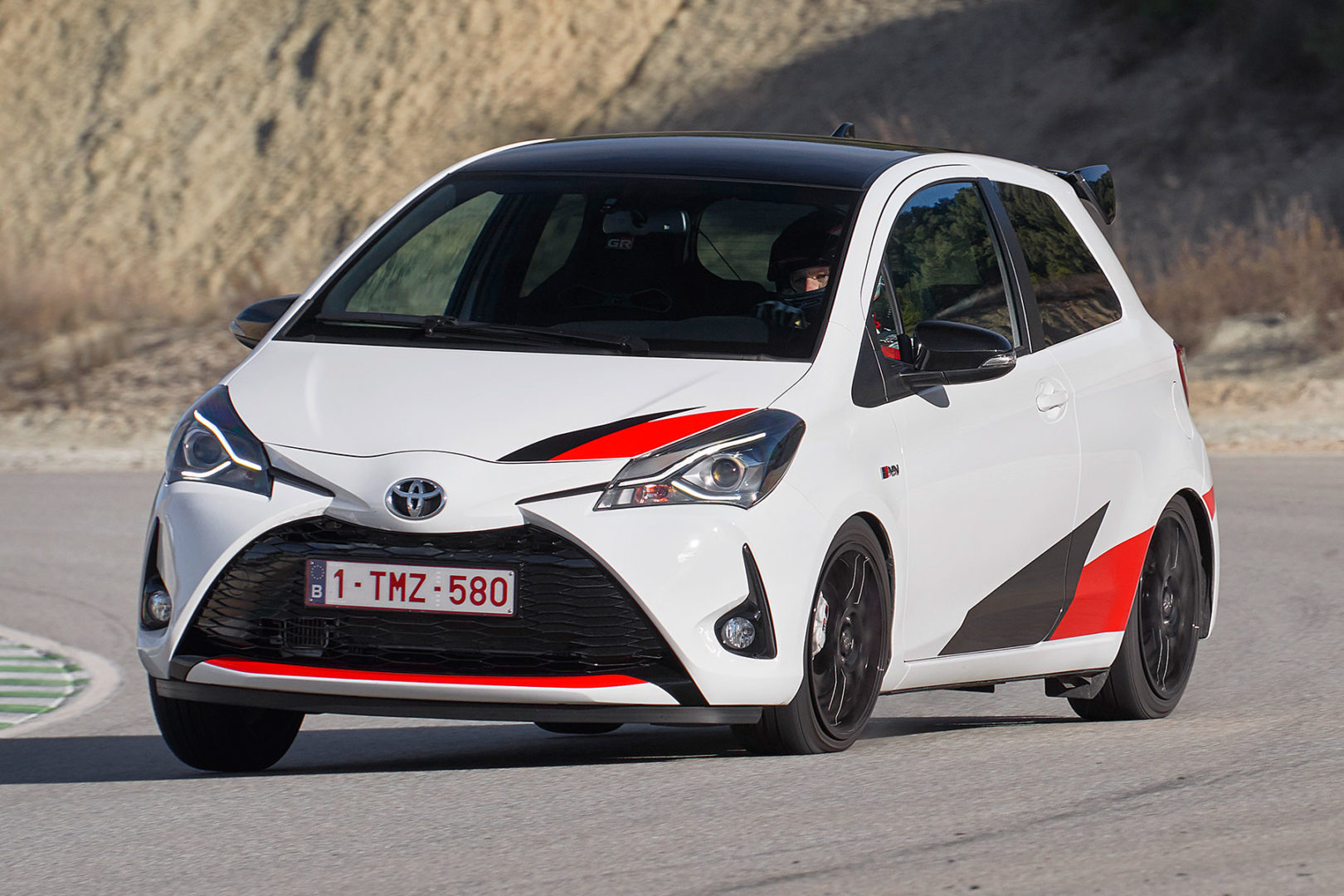Chicken: meet egg. Our feathered fowl is the new Toyota Mirai, the UK’s only fuel-cell production car. The egg is the hydrogen network needed to refuel it. Which comes first? It’s clucking complicated.
As the 2030 ban on the sale of new petrol and diesel cars looms, the likes of Ford, Jaguar and Bentley are staking it all on EVs. Perhaps they’re right. But Toyota, the largest car manufacturer of them all, is hedging its bets.
Long a leader in battery technology, Toyota’s electrified line-up now includes ‘self-charging’ hybrid, plug-in hybrid and fully electric cars. And the Mirai proves it hasn’t given up on fuel cells either.
Give lease a chance
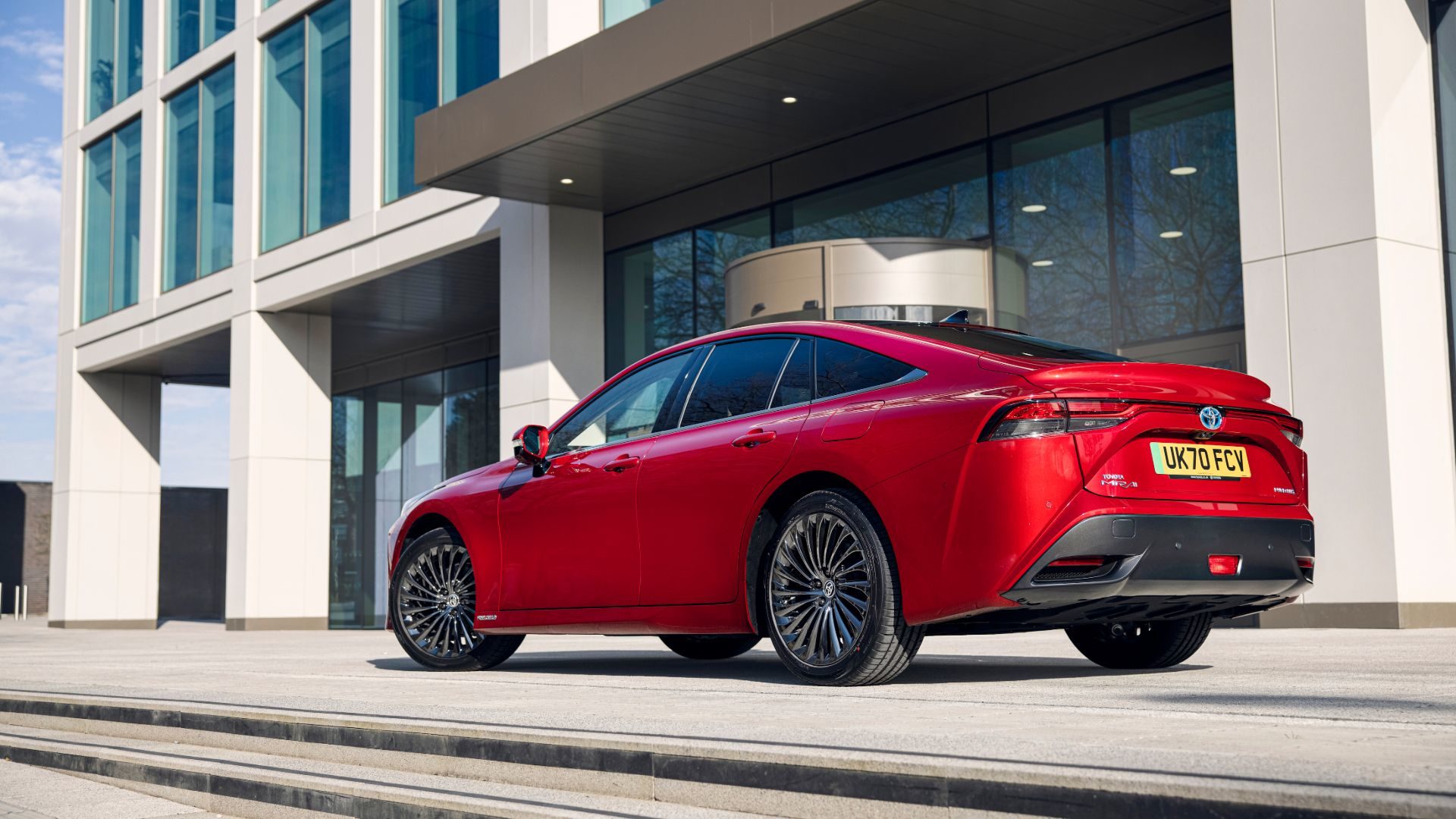
Given up? Yes, because this is the second-generation Mirai – and it’s much prettier than the gawky 2014 original, which resembled a Prius sketched by a seven-year-old. The new car’s bold grille, 20-inch alloys and svelte, fastback shape look genuinely upmarket: more Lexus than Toyota.
Its price tag is upmarket, too. The entry-level Design costs £49,995, rising to £64,995 for the fully-loaded Design Premium tested here. That’s around 20 percent less than the car it replaces, but hardly cheap.
Still, nobody is likely to buy a Mirai outright. At least, not yet. There are just 11 hydrogen filling stations in Britain – about half of them clustered around London – so the car will be initially targeted at eco-oriented fleets and taxi companies that operate close to an H2 pump.
If that sounds like you, business contract hire rates (including servicing, but excluding VAT) stretch from £435 to £609 per month. If not, read on anyway, because the significance of this car goes way beyond its sales figures.
The appliance of science
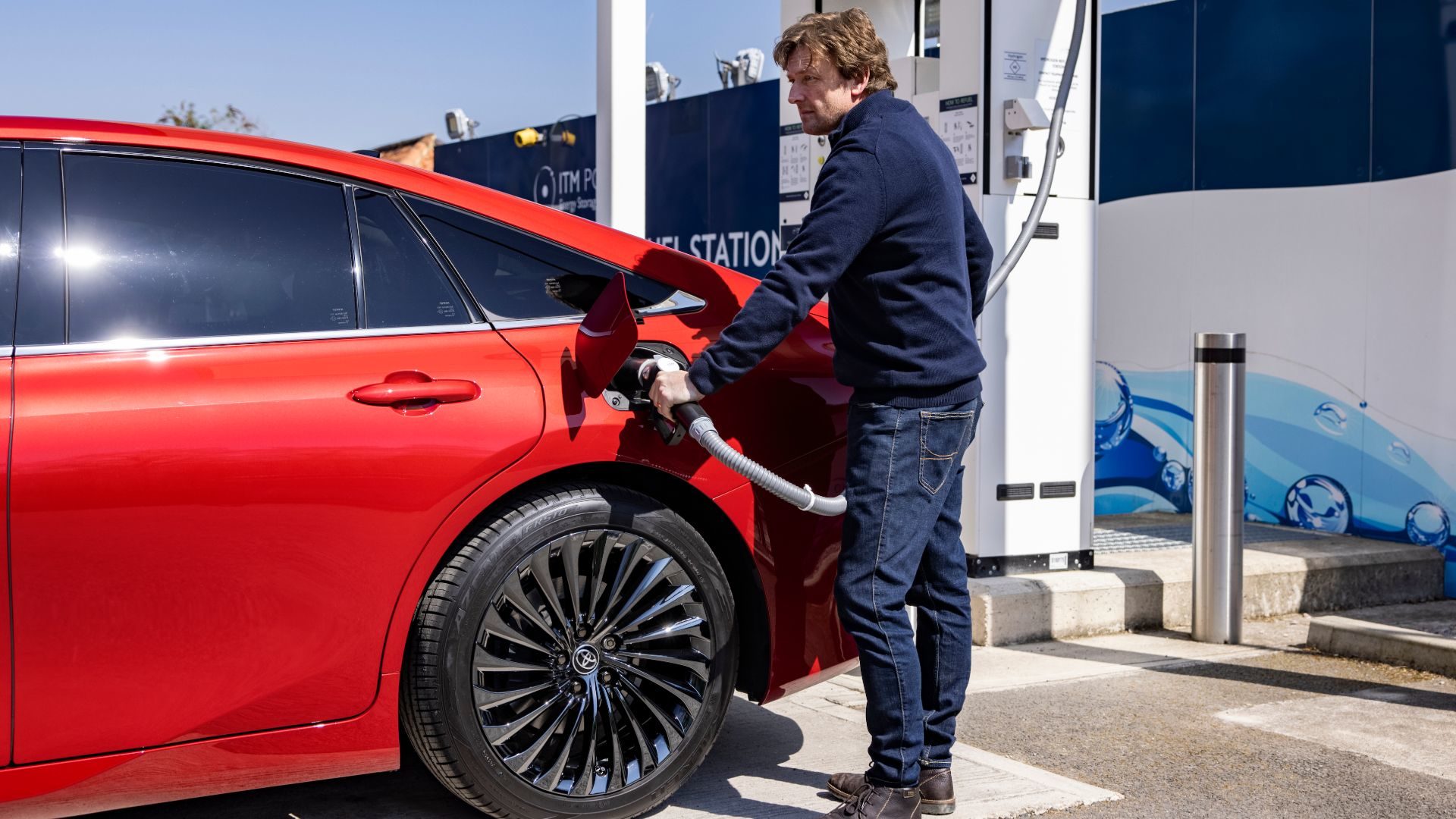
Before we get to how the Mirai drives, a quick science lesson. Lab coat and safety goggles at the ready? Let’s dive in…
Pressurised hydrogen is stored in three large tanks: one within the centre console and two at the rear. These supply a fuel cell beneath the bonnet, where an anode splits hydrogen atoms into protons and electrons.
The protons pass through a membrane, while the electrons are diverted around a circuit, creating an electrical current. Both particles then meet again at the cathode, where they combine with oxygen to make pure water – the car’s only emission.
The Mirai also employs the hybrid battery from a Lexus LS 500h to provide extra power for acceleration. Drive goes to a rear-mounted motor (the old Mirai was front-driven) via a simple fixed-gear transmission.
Steady as she goes
Got that? Good. In practical terms, it means the Mirai develops 180hp and 221lb ft of torque. In a car weighing a substantial 1,850kg, that equates to 0-62mph in an easygoing 9.6 seconds, plus a top speed of 111mph.
More significant, perhaps, is the range. A quoted maximum of 400 miles is more than any Tesla can manage, although the exact figure varies according to factors such as the outside temperature. After several days with lead-footed journalists at the wheel, my fully-filled Mirai showed a predicted 281 miles.
As for the cost of refuelling, it’s broadly on par with a petrol or diesel car. Hydrogen costs around £12 a kilo, meaning a £67.20 bill to brim the Toyota’s 5.6kg tank. However, unlike charging an EV, this process takes just a few minutes.
Taking a leak
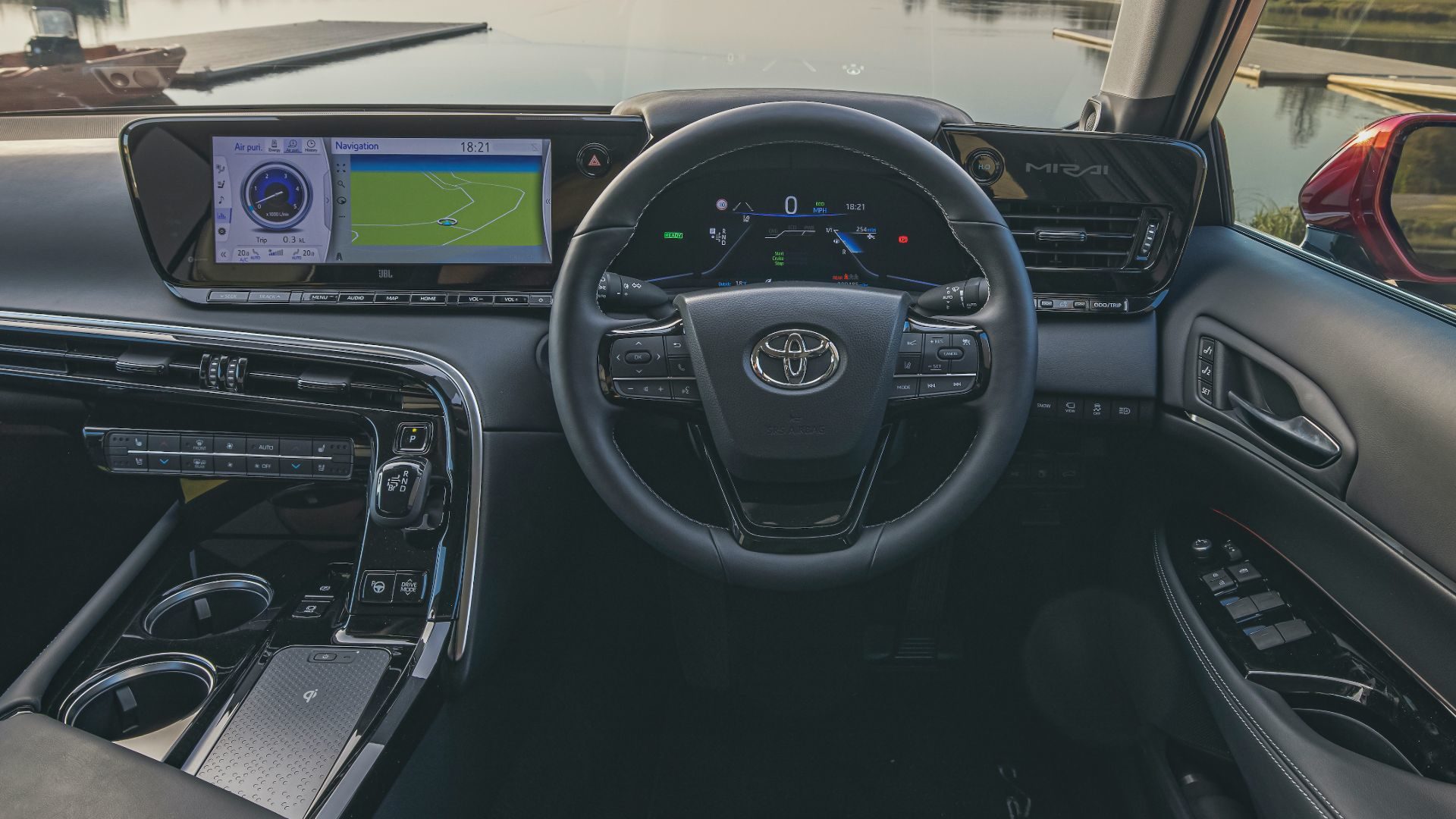
Inside, the Mirai feels plusher than a typical hire-and-reward vehicle, albeit not in the Lexus league. The stubby gear lever protruding from the dashboard will be familiar to Prius drivers, though, as will a digital display focused on how efficiently you’re driving.
The wide touchscreen is straightforward to use and syncs with your phone via Apple CarPlay and Android Auto. Standard kit includes a reversing camera, 14-speaker JBL audio system and in-car air purifier, which filters out nitrous oxide and other roadside pollutants.
Speaking of pollution, perhaps the most unusual feature is a large ‘H20’ button alongside the steering wheel. Press it and the Mirai wees out a small trickle of water. The idea, I think, is you could do this on the road, rather than leaving a puddle in your garage. It’s hardly a James Bond oil slick, but the planet will thank you later.
Space and comfort in the front are very good, despite that high central tunnel. However, those in the rear will find headroom limited by the Mirai’s plunging roofline, along with the need to house a hydrogen tank beneath the back bench. In a car aimed at the taxi trade, that seems like a rookie mistake. A 361-litre boot is no bigger than you’d find in a mid-size hatchback either.
No question of Sport
Considering the particle-splitting chemistry at work, you might expect the Mirai to feel a bit exotic – alien, even. In reality, it drives very much like an electric car: smooth, automatic and almost silent, with a helpful boost of battery torque from a standstill.
As your speed increases, there isn’t the mighty mid-range wallop of EVs in this price range – the Tesla Model 3 or Polestar 2, for example – but you’ll have no problem keeping up with traffic, even at motorway speeds.
Like me, you’ll probably try the Sport mode once and then leave it alone. It seems to make little difference and, frankly, the Mirai isn’t that kind of car. Have you considered the GR Yaris instead, sir?
More miles per kilo
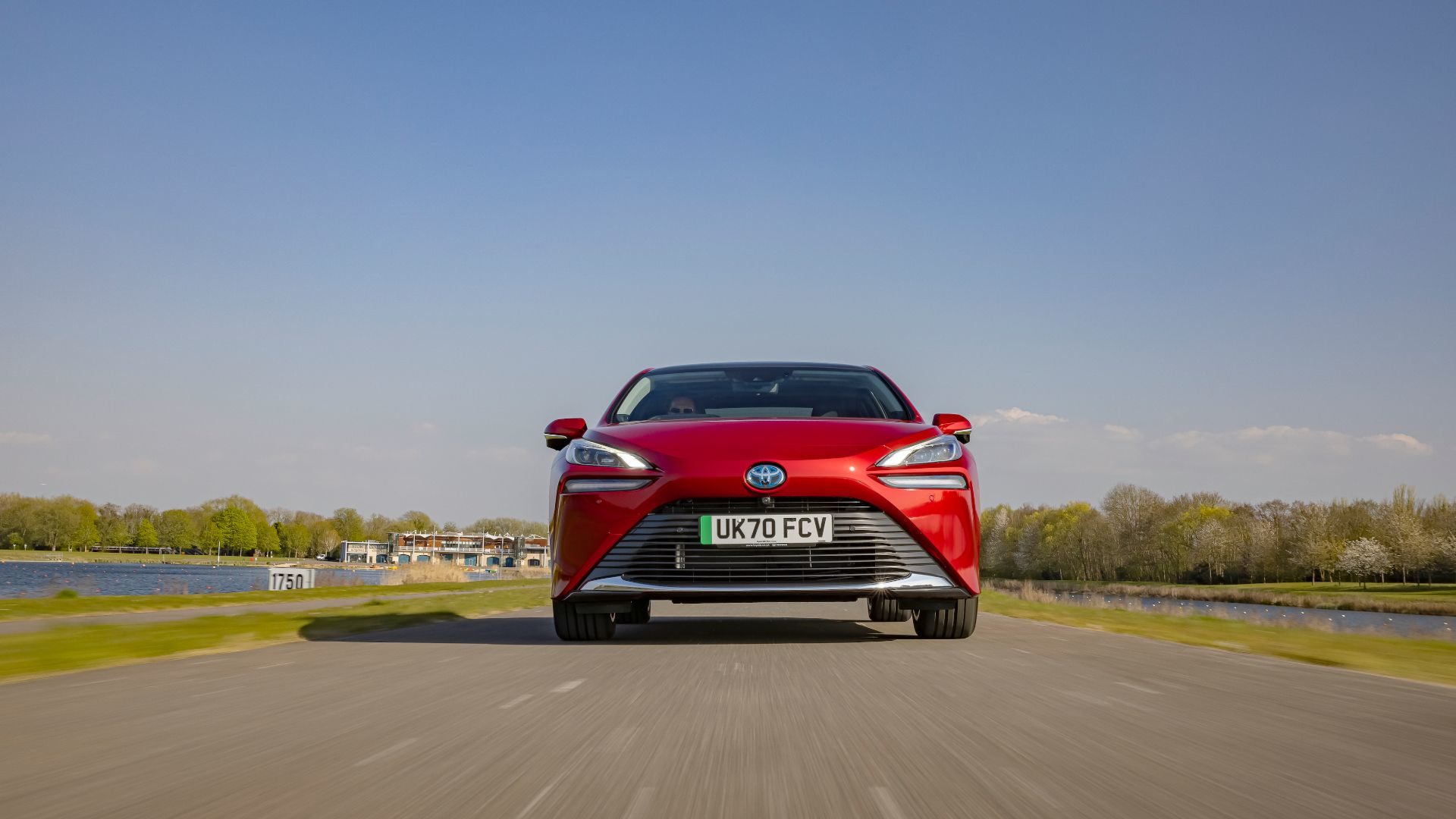
Despite its focus on comfort, the Mirai isn’t a waterbed on wheels. It’s still a few hundred kilos lighter than an equivalent EV, with perfect 50:50 front:rear weight distribution that instils a neat sense of balance.
Push a bit harder and you discover calm body control and reassuring grip from the wide, 245-section tyres. But the lifeless steering and wooly throttle response mean there is little reward for doing so.
No, better to ease off, enjoy the cosseting ride and conserve valuable fuel. Besides, that efficiency readout is making me feel guilty.
The car in front…
The Mirai faces an uphill struggle. As soon as I posted pictures of it on social media, an army of EV evangelists – many of whom apparently drive Teslas – swung into action, rubbishing the whole concept of hydrogen cars.
I don’t share their view. Like Toyota, I’m not convinced there’s a one-size-fits-all solution to our future transport needs. Perhaps most vehicles will be electric, with synthetic fuels for sports cars and hydrogen mostly used for lorries and coaches.
Hydrogen cars might suit those who, like me, don’t have a parking space to charge an EV at home. The ability to fill up as swiftly as a conventional car seems a huge plus-point.
Time will tell, but the Mirai proves that hydrogen cars can be relatively affordable, easy to drive and painless to live with. All it needs now is a wider network of filling stations and there could be a tipping point. Chicken: meet egg.
